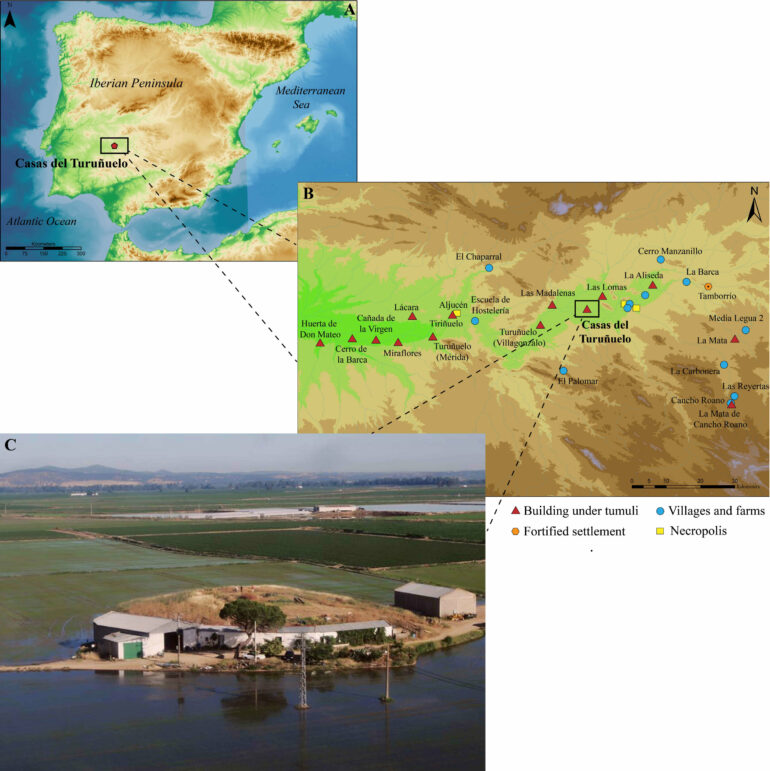An international team of researchers have conducted groundbreaking research at the Casas del Turuñuelo site in Guareña, Badajoz, Spain. Their work is published in the journal Scientific Reports.
The archaeological site stands as the best-preserved earthen building in the western Mediterranean. Thanks to its remarkable state of preservation, a team of researchers from the Universities of Helsinki and Murcia, alongside the Institute of Archaeology (CSIC—Junta de Extremadura), has successfully reconstructed the construction process of this monumental edifice. Esther Rodrigues Gonzales and Sebastian Celestino Perez, CSIC, have been in charge of the excavation of this site since since 2014.
Marta Lorenzon from the University of Helsinki, a key member of the research team, explains, “Our goal was to understand how the earthen materials were processed and used, the organization of labor, and the skill levels of the community involved in the construction. We aimed to shed light on the construction methods, environmental exploitation, and the socio-political structures that enabled the creation of such monumental architecture.”
According to one of the co-writers of the research, Benjamín Cutillas Victoria, the Tartessians’ use of earthen construction was a highly adapted and sustainable approach, particularly in local environmental contexts. The fact that they thrived using this form of architecture adds a new dimension to the story of their building skills and culture, one that has not been emphasized much in previous research.
This achievement not only highlights the advanced architectural skills of the Tartessians, but also underscores their sustainable approach to building in harmony with their local environment.

Mudbrick wall documented in the south corridor of the structure and a selection of imported materials, including glass bowls from the Eastern Mediterranean and a fragment of Pentelic marble sculpture. © Project Construyendo Tarteso
“This research can help us better understand sustainable building practices from the past that might inspire modern construction. The use of local, natural resources in a coordinated manner could offer ideas for eco-friendly building approaches today,” Lorenzon states.
Additionally, understanding how ancient societies organized labor and resource management can provide lessons for modern-day project management and workforce coordination.
“The ability to reconstruct these ancient techniques provides invaluable insights into how this protohistoric culture thrived and adapted, offering a new dimension to our understanding of their ingenuity and resilience,” Lorenzon concludes.
More information:
Benjamín Cutillas-Victoria et al, Hierarchical organization and skilled workforces for constructing the Tartessic earthen building at Casas del Turuñuelo (Guareña, Spain), Scientific Reports (2024). DOI: 10.1038/s41598-024-70374-x
Provided by
University of Helsinki
Citation:
Archaeologists shed light on the Tartessos culture’s sustainable construction skills (2024, October 4)



